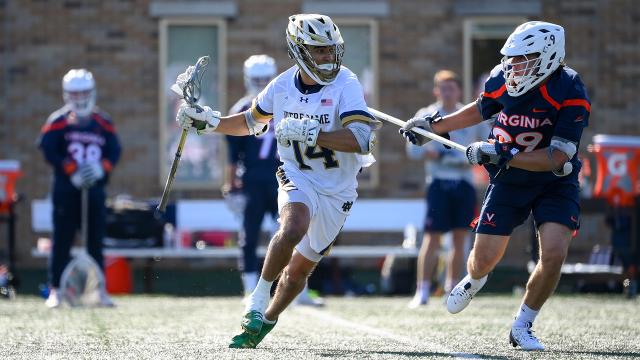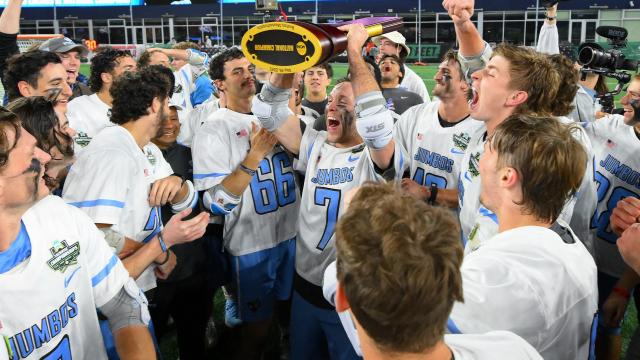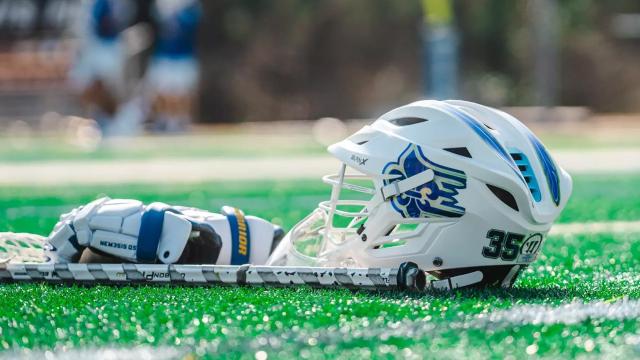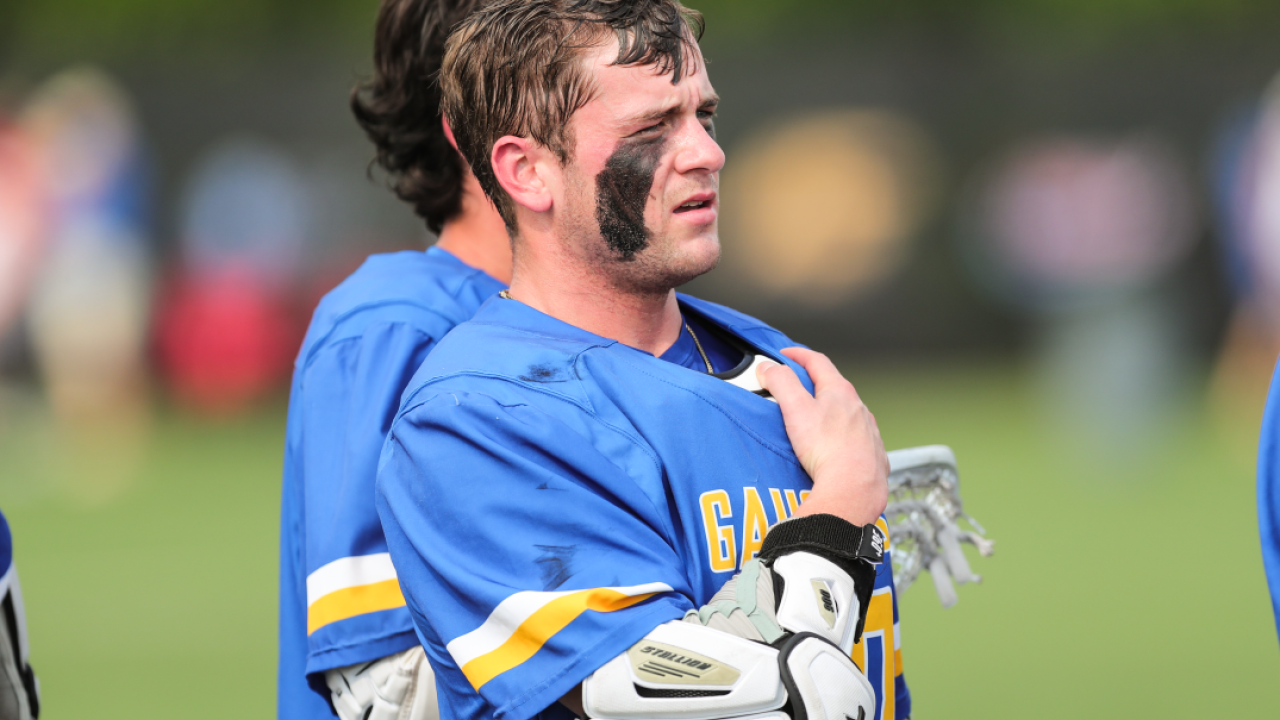
Saving Smitty: A Santa Barbara Lacrosse Story
THEY SET UP IN A 1-4-1.
Ashton Wong caught a feed on the high crease, pulled up from six yards out and uncorked a shot from the high slot. The ball caromed off the Michigan State goalie’s stick toward the backside pipe, where Andrew Smith awaited.
“I’d been working on finishing from that exact spot for weeks,” Smith said. “It just felt like a reflex to grab the rebound and get the dunk.”
Then came the made-for-the-MCLA moment UC Santa Barbara coach Mike Allan won’t soon forget. It happened on an auxiliary field at the Round Rock Multipurpose Complex. No scoreboard. No stream. Just two virtual varsity runners-up playing a consolation game in the MCLA National Championships at 9 o’clock on a Tuesday morning in central Texas.
A backup goalie turned extra-man attackman, Smith, 25, collected the rebound and scored his first career goal.
“Getting to celebrate with my teammates on the field and hearing the cheers of my teammates after scoring a goal in Round Rock, even in a consolation match, meant the world to me,” Smith said. “I’m not even sure of the final score of that game, and to be completely honest, I don’t care what the score was. There wasn’t even a scoreboard on the field. We were just playing ball, and that’s everything I’ve been working toward these past few years.”
Six years, actually, almost to the day when USA Lacrosse Magazine first interviewed Smith at Allan’s behest. “If he scores at the tournament,” Allan wrote in an email, “my heart might explode with pride.”
Our interview was scheduled for May 4, on the eve of the sixth anniversary of the unfathomable accident that nearly killed Smith when he was a freshman at UCSB and four days before the 14th-seeded Gauchos would face third-seeded Liberty in their first national championship appearance since the year before that.
This story, Allan urged, was about much more than just lacrosse.
“It’s one of those stories you can’t help but stop and listen to and gain something from,” Allan said later. “I just want it to be told.”
THE SANTA BARBARA SKATE SCENE has dwindled some since its heyday in the late 1990s and early 2000s, when sidewalk surfers practiced kickflips and ollies in the drainage ditches of Goleta and at UCSB’s Broida Hall. It’s tamer now, with recreational skateboarding largely relegated to Skater’s Point.
Still, you’re more likely to see students on skateboards than bikes — especially in Isla Vista aka the I.V., the off-campus community nestled on a narrow shelf between the Santa Ynez Mountains and the Pacific Ocean.
“People skateboard like crazy,” said Avi Becker, a Colorado native who played lacrosse at UCSB, graduating in 2018. He’s a real estate broker in Santa Barbara. “It’s not uncommon to see people towing or hitching. I used to hitch behind my friends’ bikes all the time to get pulled. People would skate to practice with their full bags.”
Becker does not know how Smith, his teammate and Zeta Beta Tau fraternity brother, wound up in the rear wheel well of a 10,000-pound box truck. Those skateboarding lanes are quite narrow. Maybe he hitched at the wrong time. Maybe he hit a pothole.
Smith himself has minimal recollection of the events of May 5, 2017, when he left the ZBT house to get a Red Bull at the nearby 7-Eleven.
One minute, he was on his skateboard. The next, in a hospital bed, his internal organs displaced. His lungs punctured. His back, pelvis and ribs shattered. The accident happened in front of a burrito restaurant called Freebirds. A bystander called 911. A priest called Smith’s parents.
When Smith woke up in the intensive care unit at Santa Barbara Cottage Hospital, he felt the thermoplastic tube penetrating his windpipe and saw the other end of it attached to a ventilator. He had tension pneumothorax, a life-threatening condition in which air gets trapped in the lining of the chest cavity due to a pulmonary laceration.
The Freebirds customer who saw the accident visited the hospital. Smith’s father, Joseph, an associate professor of biomedical engineering at Johns Hopkins and biotech executive, bought the man lunch. They never got his name.
“I’ve been very blessed with the people I’ve encountered along this whole journey,” Smith said.
Not the least of whom were his UCSB coaches and teammates. After his family — Smith’s mother, Ann, and older brother, Jonathan, also were at the hospital — they were the first people Smith saw.
“I had just seen him earlier in the day. We were shocked,” Becker said. “We weren’t sure if he was ever going to walk again or if his life would ever resume to being at a normal place.”
Allan tried to lighten the mood of the room. “Usually my go-to in a situation like that is to crack a joke,” he said. “He couldn’t respond. He recognized our faces and that’s about it.”

PHOTO COURTESY OF ANDREW SMITH
Smith was hospitalized for five weeks after a 2017 skateboarding accident in which he was run over by a 10,000-pound box truck.
Smith remained hospitalized for five weeks, a period during which he underwent multiple surgeries to reposition his heart and repair the laceration in his diaphragm that had caused his stomach and small intestine to spill into his thoracic cavity.
“Seeing the aftermath and the shape he was in — I mean, miraculously, he’s still with us,” Allan said. “But we’re also thinking he’s got a long way to go.”
Because the truck rolled over his midsection, Smith’s central nervous system was spared. He had a concussion but did not sustain any additional injuries to his brain or spinal cord. He used a wheelchair for three months after returning home to Del Mar, California, about 20 miles north of San Diego. With the help of physical therapy, he started walking again that September.
Smith was always a bit of a gym rat, anyway.
“I was focused on getting strength back in my hips to the point where I could support myself,” he said. “My adductors, the muscles on the inside of my legs that pull them together, were completely sheared off the bone. My PT focused on hip stability and strength recoupment to get myself to a point where I could walk again.”
BY ALL ACCOUNTS OF THE ACCIDENT, Smith should have died from his injuries.
Instead, just eight months after the accident, he re-enrolled at UCSB and had every intention of returning to the lacrosse field for his sophomore season in 2018 — if only to support his teammates as he rehabilitated.
But something was off, Allan noticed. Smith would show up to practice sometimes but disappear for days afterward.
“I remember not wanting to turn him into some Rudy type of character, a win-one-for-Smitty type of thing,” Allan said. “I wanted it to be on his terms. We completely understood if he needed distance from it or if he needed space to deal with just being back at school.”
This part of the story makes Smith uncomfortable. He asked not to dwell on the subject but acknowledged there are people in the lacrosse community who could benefit from hearing about it — especially athletes who take opioids to manage pain.
A 2018 study in the American Journal on Addiction found that non-medical use of prescription opioids in adolescents is significantly higher among student-athletes than the general student population. More recent findings by the University of Michigan indicate that high school athletes who play contact sports are even more likely to misuse prescription drugs in their 20s.
“Athletes are uniquely prone to some pretty serious injuries, and with those serious injuries come painkillers or other prescription drugs that may be hard to stop using,” Smith said. “I guess my case was a pretty extreme example of that.”
Smith became addicted to prescription opioids. His chemical dependency got to the point that he left school again, this time to get sober.
“With the severity and duration of my injuries, it was hard to avoid using,” he said. “Coming off those was tough.”
Smith declined to provide the “gritty” details of his substance abuse or how he overcame the addiction, citing privacy concerns.
“Sobriety has made a lot of things possible,” he said. “The cessation of using any mind- or mood-altering substances has helped me clarify what I want and need to do. It was a problem born of another problem that I just had to deal with.”
Lacrosse gave Smith not only a long-term goal, but also a coping mechanism. He poured himself into coaching, latching on as a goalie specialist for his high school team at La Jolla Country Day. The team advanced to the 2019 CIF San Diego Division I championship game and the goalie Smith mentored was an all-league selection.
“By the end of my first season coaching, I needed to find my way back on the field,” he said. “I could not keep myself away.”
Smith enrolled in classes at Mira Costa, a community college in San Diego, and kept up his credits through the onset of the coronavirus pandemic in 2020. That October, he texted Allan, who had not heard from Smith in more than two years.
“It’s Smitty,” Smith texted. “I’m coming up on two years sober and I’m planning on returning to UCSB as soon as in-person classes start up again. Do you think there’d still be a spot for me on the team?”
Allan could not believe his eyes. “That’s amazing,” he texted back. “We’d love to have you back on the team when we’re back.”
“Thanks Coach,” Smith replied. “Super excited to return to Santa Barbara on my A game.”
Said Allan: “That was the best text I’ve gotten in a while.”
SMITH’S COMEBACK HAD TO WAIT ANOTHER YEAR. The pandemic claimed not only the remainder of the 2020 season but also the entire 2021 campaign. He moved back to Santa Barbara, anyway, and changed his major from economics to environmental studies. He lived off campus and worked out every day.
“We would go to the gym together and get breakfast together,” Becker said. “You could tell he was really on a mission.”
UCSB’s first practice back was electric. It had been 18 months since the Gauchos last took the field together before the pandemic. Allan peered through the players flying all over the field in excitement to see a familiar figure between the pipes, almost stoic amid the chaos.
“It dawned on me toward the end of that first practice. Smitty is standing there in goal. He’s on the field, suited up and playing lacrosse. This is kind of amazing,” Allan said. “It was also sort of shocking how normal and subtle it was.”
It had been four years since Smith last wore a Gauchos jersey. His classmate Jake Newman, who was still on campus finishing his degree, introduced him to the new players. No one else was left, and thus no one made that big a deal of Smith’s return.
That is, until it came time to award the No. 19 jersey. UCSB votes every year to give the number to a player in honor of 2003 graduate Matt Lynn, who died of brain cancer in 2009. The Gauchos usually do this after the spring season, but in 2021 they did it during the fall alumni weekend.
Smith was the natural choice. It meant even more considering Smith’s best friend, Jake Andrews, died from a rare and aggressive sarcoma the day UCSB played Loyola Marymount in February 2017 — three months before Smith’s accident.
Smith and Andrews played lacrosse together at La Jolla Country Day before Andrews moved to the United Kingdom and then South Africa. They went fishing together whenever Andrews flew back to the U.S. and got matching tattoos of Poseidon’s trident when Smith visited the U.K.
“It would be a lie to say Jake didn’t play a part in my recovery and success,” Smith said. “It would have been a disservice to him not to work as hard as I have to come back. Not everyone gets a second chance.”
A lefty goalie, Smith played sparingly during the 2022 season. He made 11 saves and allowed nine goals in relief of freshman starter Kevin Shvodian. He decided to switch to attack to give himself a better chance to play.
“Every backup goalie dreams of playing man-up. I figured why not,” Smith said. “Coach Allan agreed with me.”
Besides the irregularity in his gait or the way one knee droops forward when he sits down, Smith showed no ill effects of the massive injuries he sustained in the accident.
“We don’t have a ton of lefties,” Allan said. “We needed someone to fill that role.”
UCSB qualified for the MCLA National Championships for the first time since 2016, defeating Cal and Cal Poly to claim the WCLL Division I title and automatic berth. Smith embraced the Gauchos’ motto, “The job is not finished.”
Smith sees himself the same way, a work in progress. Even after scoring his first career goal. He has one year of eligibility remaining and unfinished business at UCSB, where he’ll play as a 26-year-old senior next spring. He’s five years sober and entirely comfortable living in a college town without participating in the party scene. He works for the university as a lab assistant and strength and conditioning coach for club teams.
“I find myself useful again, and that’s really meant the world to me,” Smith said. “The journey I’ve been on with this team has not been a typical one. The support from the coaches, the players and alumni has been lifesaving. I’m endlessly grateful to the program.”
Matt DaSilva
Matt DaSilva is the editor in chief of USA Lacrosse Magazine. He played LSM at Sachem (N.Y.) and for the club team at Delaware. Somewhere on the dark web resides a GIF of him getting beat for the game-winning goal in the 2002 NCLL final.
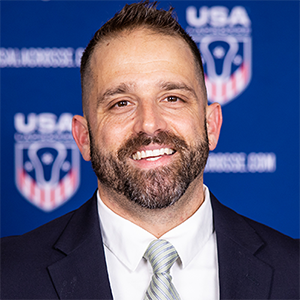
Categories
Tags
Related Articles
